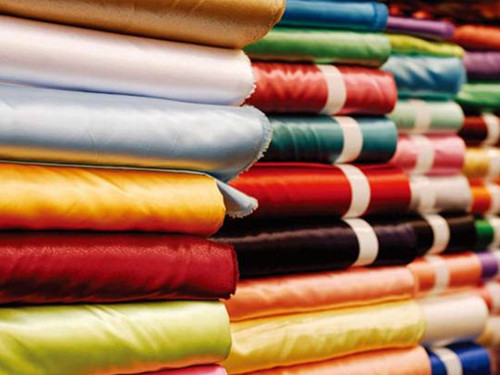Cases
The commonly used dyes in printing and dyeing industry are divided into the following categories: reactive dyes, disperse dyes, direct dyes, VAT dyes, sulfide dyes, acid dyes, cationic dyes, insoluble azo dyes.
The largest amount of reactive dyes, often used in pure cotton, viscose, tencel, modal, hemp fabrics dyeing and printing. Silk, wool and nylon are also commonly dyed with reactive dyes.
Reactive dyes are composed of three parts: parent, active group and linking group. According to the active group classification commonly used are monochlorometriazine, vinyl sulfone, dichlorometriazine type. Dichlorometriazine is generally dyed at room temperature and below 40°C, known as low-temperature dyes; Vinyl sulfone is generally dyed at a temperature of 60°C, generally known as medium-temperature dyes; Monochlorometriazine is dyed at 90-98°C, generally known as high temperature dyes. Most of the dyes used in reactive printing are monochloro-triazine dyes.

Disperse dyes are often used for dyeing and printing polyester and acetate fibers. Disperse dye polyester dyeing methods include high temperature and high pressure method and hot melt method, carrier dyeing method is rarely used because the carrier is toxic. The high temperature and high pressure method is used for immersion and curling, and the hot melt method is used for pad dyeing. The acetate fiber can be dyed at 80°C, and the PTT fiber can achieve a high dyeing rate at 110°C. Disperse dyes can also be dyed polyamide, but it is generally used for light colors, good levelling, and poor fastness to medium and dark washing.
Direct dyes can be dyed cotton, viscose, hemp, tencel, modal, silk, wool, soy protein fiber, nylon and other fibers. However, the general fastness is not good, so the amount of cotton and hemp is gradually reduced, and the amount of silk and wool is still relatively large. There are also direct blended dyes, high temperature resistance, and disperse dyes can be dyed in the same bath polyester cotton blend or interwoven.
VAT dyes are mainly used for dyeing cotton and hemp fabrics, and the color fastness is good, whether it is washing fastness, perspiration fastness, sun fastness, friction fastness or chlorine fastness, it is better, but some dyes have photosensitive brittleness. Often used in pad dyeing, the dye is reduced to dye, and then oxidized. Some dyes are made into soluble VAT dyes, which are easy to use, but the price is high. Cationic dyes are mainly used for dyeing and printing of acrylic fiber and cationic modified polyester fiber. Good fastness to sunlight, individual dyes are particularly bright.
Vulcanized dyes are often used in the dyeing of cotton and linen fabrics, which have good covering property but poor color fastness. The largest amount is vulcanized black, but there is a phenomenon of storage brittleness damage.

Acid dyes are divided into weak acid dyes, strong acid dyes, neutral dyes, mainly used for dyeing nylon, silk, wool, protein.
Insoluble azo dyes are rarely used now for environmental reasons.In addition to dyes, there are coatings, coatings are generally used for printing, but also for dyeing. The coating is insoluble in water and adheres to the surface of the fabric under the action of the adhesive, and the coating itself does not react chemically with the fabric itself. Paint dyeing is generally in the long car pad dyeing, but also used for fixing the color on the setting machine. Anti-printing of reactive dyes, generally with paint, add ammonium sulfate or citric acid, anti-printing of reactive dyes.

Quality service and professional after-sales team.
East of Fangjia village, Zhutai Town, Linzi District, Zibo City, Shandong Province


Get in Touch
*We respect your confidentiality and all information are protected.

